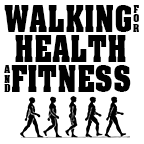If you’ve ever struggled to stay consistent with a fitness routine, you’re not alone. Most people don’t fall short because they lack motivation—they just haven’t found a system that actually works with their body and mind. That’s where the Walking Works comes in.
This four step habit builder is based on the Walking Works program, and reveals how walking improves your nervous system, reduces belly fat, quiets anxiety, and helps you create a fitness habit that actually sticks. Whether you're just starting or trying to restart, these insights will show you how just 10 minutes a day can change your life.
Let’s dive in.
1. The Science Behind a 10-Minute Walk
You’ve heard that walking is good for you. But what you might not know is how deeply it impacts your brain, hormones, and nervous system.
Just 10 minutes of walking can lower cortisol (your stress hormone), boost serotonin (your feel-good chemical), and increase GABA (your natural anti-anxiety neurotransmitter). This shift puts your body into parasympathetic mode—a relaxed state where healing and emotional stability can take place.
The secret sauce? Walking with intention. When paired with rhythmic breathing—like my Odd-Number Breathing Pattern (inhale for 4 steps, exhale for 3)—you activate the vagus nerve, which controls digestion, heart rate, and emotional regulation. It’s a full-body reset, and it starts with a single step.
Discover how to turn simple steps into lifelong wellness with my book Walking for Health and Fitness—your complete guide to walking stronger, longer, and smarter.
2. Walking Really Works When Diets Fail
Forget crash diets and intense gym sessions. When it comes to long-term fat loss, walking is one of the most effective tools available.
That’s because walking boosts NEAT—non-exercise activity thermogenesis—which accounts for the majority of calories burned throughout the day. According to research published in Mayo Clinic Proceedings, NEAT can vary by up to 2,000 calories per day depending on your daily habits.
Walking also reduces cortisol, which plays a major role in storing belly fat. When your stress levels drop, your body no longer feels the need to store emergency fuel around your midsection.
Even better? Walking improves insulin sensitivity and reduces sugar cravings. Studies show that a 15-minute walk after meals can significantly improve blood glucose levels, while also decreasing cravings for sugary foods.
It’s not just about burning calories. Walking improves digestion, balances hormones, and calms the nervous system. It’s sustainable, enjoyable, and effective.
3. Walking Off Anxiety: A Simple Habit to Calm Your Mind
Anxiety doesn’t just live in your thoughts—it lives in your body. When stress becomes chronic, it puts your nervous system in overdrive.
But walking offers an antidote.
A study from the University of California, Davis found that walking for just 10 minutes reduced activity in the amygdala—your brain’s fear and stress center. In fact, walking outperformed seated meditation in terms of mood enhancement and emotional clarity.
The combination of movement and breathing creates a rhythmic pattern that helps your nervous system shift out of fight-or-flight mode. Using Odd-Number Breathing while walking increases focus and calms the body’s internal alarm system.
If you’ve been feeling overwhelmed, anxious, or emotionally exhausted, try a short walk with breathwork. It could be the most effective therapy you haven’t tried yet.
Stay inspired and informed—sign up for the WIN (Walking Inspiration Newsletter) and get weekly tips, motivation, and walking strategies delivered to your inbox.
4. How to Build a Walking Habit That ACTUALLY Sticks
Most fitness habits fail not because people lack willpower, but because they haven’t built the right identity or momentum.
In this final video, we reveal that successful habit formation starts with how you see yourself. If you say, “I’m trying to walk more,” your brain hears that it’s optional. But when you say, “I’m a walker—this is what I do,” you begin to shift your identity.
Small actions create big changes. When you celebrate micro-wins—like putting on your sneakers or walking a single loop around your block—you get a dopamine boost that reinforces the habit.
Behavioral science backs this up:
Research from Dr. Wendy Wood shows that repeating actions in the same environment shifts control from your decision-making brain to your habit-forming brain (the basal ganglia).
Studies on implementation intentions reveal that habit stacking (pairing a new habit with an existing one) greatly improves consistency. Try walking right after your morning journal or after your last work email.
According to Dr. BJ Fogg, repetition and frequency are what make behaviors automatic. Aim for short, daily walks to build long-term momentum.
Track your wins visually with a calendar, app, or the free tracker in my Power of Starting guide. Each entry says: “I showed up for myself today.”
Ready to Start Walking for Real?
The Walking Works program is built around these exact principles. It doesn’t ask you to overhaul your life overnight. Instead, it gives you the tools to build a walking habit that lasts a lifetime—one step, one breath, one win at a time.
Start today with The Power of Starting. It’s a free guide that includes:
A 10-minute walking plan
A visual habit tracker
Breathing techniques for relaxation
And the proven mindset shift that makes walking stick
Whether you want to reduce anxiety, lose weight, or simply feel more alive in your body, this loop is the place to begin.
Click here to download The Power of Starting and take your first step today.
Walk on,
Frank S. Ring
Author: Walking for Health and Fitness, Fitness Walking and Bodyweight Exercises, Walking Inspiration, Walking Logbook Journal , and Walking Works Blueprint




